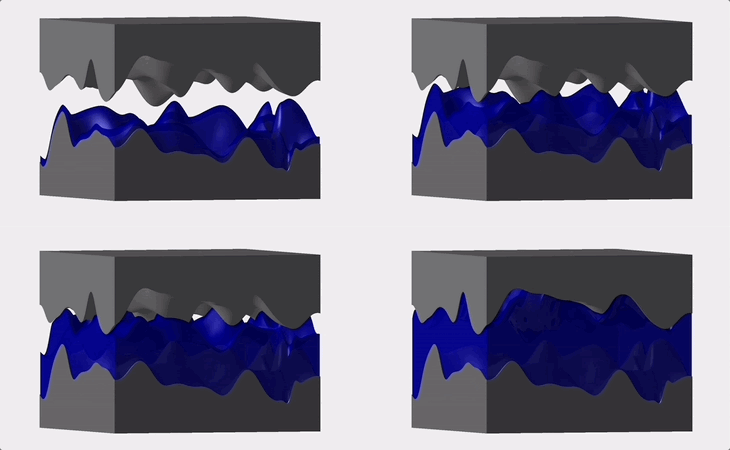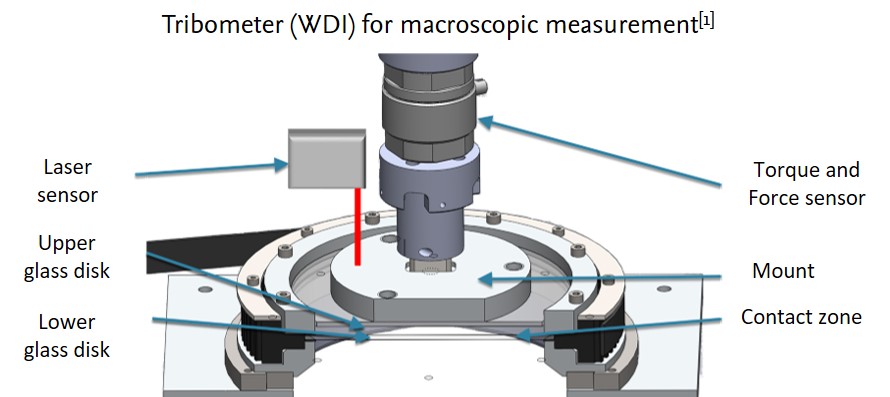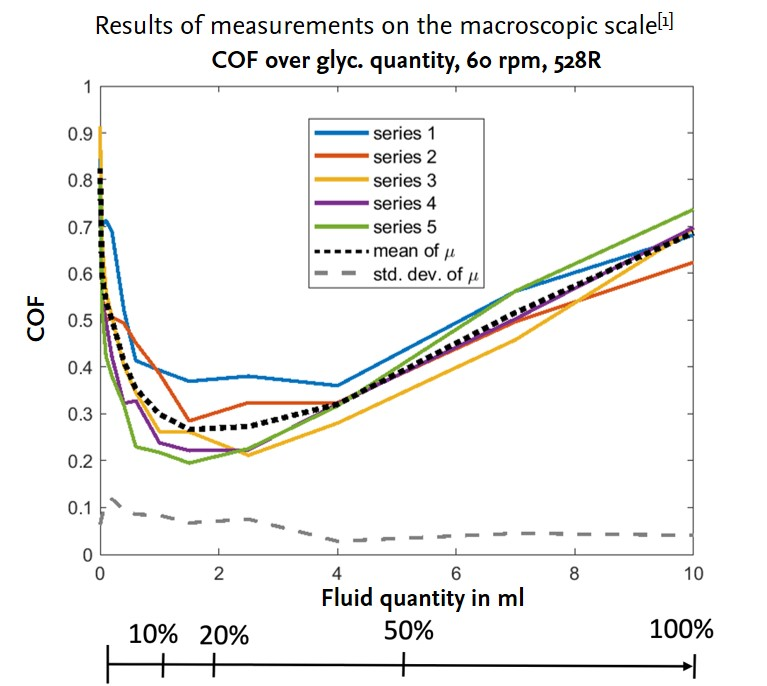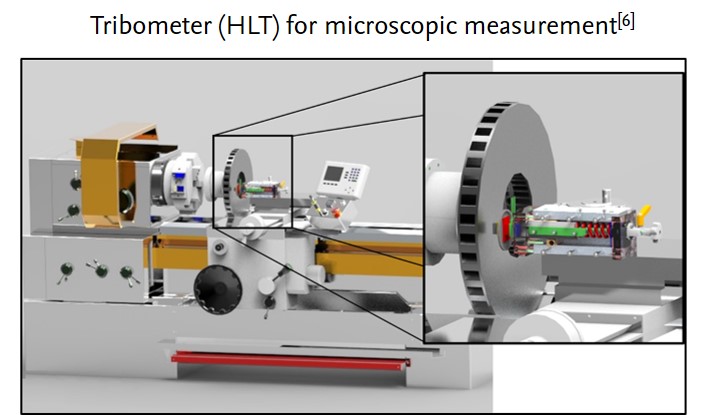
In lubricated systems, there are various operating conditions where the supply of lubricant can be restricted, such as idling or failure of the oil supply. This results in insufficient lubrication and partially filled gaps, which can occur macroscopically throughout the system or just locally. These operating conditions can be critical for reliability. In conventional considerations, such as the Stribeck curve, the fluid quantity is not listed as an influencing variable, even though the Stribeck curve represents precisely this transition. This completed DFG project particularly focused on the question of how the quantity of fluid itself influences the resulting friction regime and how the fluid quantity controls the transition from dry friction to hydrodynamic lubrication. To address this issue, experiments were conducted with two tribometers on different size scales, whereas simulations were carried out with a novel model (PFGM) suitable for partially filled gaps and solid contacts. The aim was to analyze the tribological and contact mechanical properties of the investigated friction scenarios and to provide an explicit description of the fluid flow.
The WDI is a disc-on-disc test rig developed at the Institute. The ornamental glass discs are well suited to allow both roughness and transparency in the contact geometry and to observe the fluid distribution in the gap.


The HLT is designed for basic friction testing with various friction parameters and offers great flexibility for the use of additional measuring devices. This allows many friction mechanisms to be accurately described, with particular emphasis on the influence of lubricant quantity.


Based on the experimental studies, the PFGM [7, 8, 9] is used to investigate the fundamental principles of partially filled gap flows. In particular, the PFGM investigates the influence of the amount of fluid in the gap on the tribological properties of the contact. The model is used in several research projects.

Müller, M., Stahl, L., & Ostermeyer, G. P. (2018). Experimental studies of lubricant flow and friction in partially filled gaps. Lubricants, 6(4), 110.
Stahl, L., Müller, M., & Ostermeyer, G. P. (2019). On the Lubricant Flow and the Friction Coefficient in Partially Filled Gaps. PAMM, 19(1), e201900078.
Müller, M., Stahl, L., & Ostermeyer, G. P. (2020). Studies on the pressure buildup and shear flow factors in the cavitation regime. Lubricants, 8(8), 82.
Müller, M., Stahl, L., Arafat, R., Madanchi, N., & Herrmann, C. (2021). A case study on the observability of cutting fluid flow and the associated contact mechanics in scaled rough surfaces. SN Applied Sciences, 3(5), 570.
Müller, M., Willenbrock, S., Stahl, L., Vallée, T., & Fricke, H. (2023). Towards the efficient modelling of trapped air pockets during squeeze flow. Experimental and Computational Multiphase Flow, 5(1), 29-52.
Stahl, L., Müller, M., & Ostermeyer, G. P. (2023). On the experimental characterization of the fluid volume influence on the friction between rough surfaces. Friction, 11(7), 1334-1348.

Vacancies of TU Braunschweig
Career Service' Job Exchange
Merchandising
Term Dates
Courses
Degree Programmes
Information for Freshman
TUCard
Technische Universität Braunschweig
Universitätsplatz 2
38106 Braunschweig
P. O. Box: 38092 Braunschweig
GERMANY
Phone: +49 (0) 531 391-0
